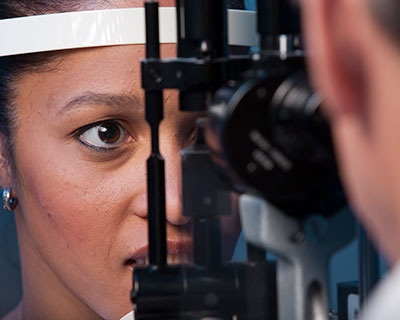Cellulitis is an infection that can affect the skin and/or the eyes.
There are two types of cellulitis that affect the eyes:
Preseptal cellulitis only affects eyelid tissue. This type of cellulitis usually happens in children, especially young children.
Orbital cellulitis affects the eye socket (called the orbit). This form of cellulitis can cause the eye or eyelid to swell, keeping the eye from moving properly.
Orbital cellulitis is a serious condition. It often needs to be treated more aggressively than preseptal cellulitis.
What causes cellulitis?
Cellulitis is often caused by an infection from bacteria. It can also be caused by a fungal infection.
Other problems that can lead to cellulitis include:
- insect bites
- a skin wound (especially on the face)
- dental surgery or other surgery of the head and neck
- sinus infection
- asthma
An infection can start in the sinuses, then spread to the orbit or eyelid. Because sinus infections are more common in cold weather, cellulitis occurs more in the winter.
It is important to clean any wounds carefully. You also need to follow your doctor or dentist’s instructions for caring for yourself after surgery.
Cellulitis is serious because the infection spreads quickly. That is why it must be treated right away.
If you think you or your child have cellulitis, call a doctor right away. If it is not treated immediately, cellulitis can cause vision loss or even spread throughout your body.
It appears that as more people are getting flu vaccinations, fewer people are getting cellulitis—especially pre-septal cellulitis.
What are the symptoms of cellulitis?
Cellulitis symptoms include:
Diagnosis
To see if you have cellulitis, your doctor will ask if you have had any recent surgery or dental work. They will also ask if you have had recent face or skin wounds, and chest, lung or sinus infections.

Eye Exam
Your doctor will also examine your eyes.
To diagnose the type of infection you have, your doctor will probably do some tests. If they think you might have preseptal cellulitis, they may test tissue from your nose or eye. If they suspect orbital cellulitis, they may do a blood test.
In some cases, your doctor may also have you get a scan of the affected area. These images will help your doctor see where the infection is within the orbit.
Treatment
In most cases, your doctor will have you take an antibiotic medicine to treat your cellulitis.
With pre-septal cellulitis, you should start to notice the infection getting better in about a day or two while taking antibiotics.
Because it is more serious, orbital cellulitis may not improve with (oral) antibiotics. If that happens, you may need to stay in the hospital to be treated. They will give you special antibiotics continuously through a vein in your body.
In some cases, your doctor may need to drain fluid from the infected area. Sometimes this can be performed in your doctor's office. Other times, it may mean having surgery in a hospital or outpatient clinic.
Your doctor will explain the cellulitis treatment chosen for you. If you have any questions, be sure to ask. Your ophthalmologist is committed to protecting your sight.